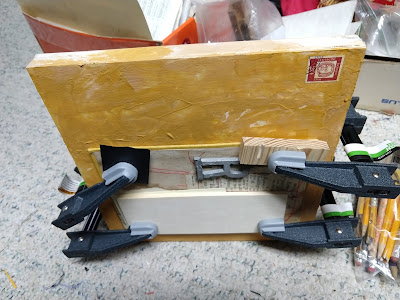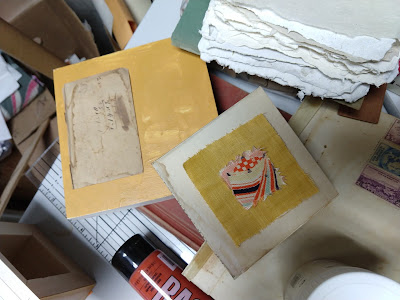The other day Marietta left a comment on an old blog post that I had written about my marathon of making baby quilts for my dear friend Zuki's grandchildren. Actually, she has been so blessed with grandchildren that I had to do another marathon last summer to catch up.
All of the quilts consist of blocks made by my friend's grandmother, mostly from scraps that her sewing pal brought home from the aloha shirt factory in Hawaii. And all of the blocks use the same pattern. I don't know the name of the pattern, and it's tricky to sew because of lots of bias edges, but apparently Zuki's grandma loved it. She made hundreds of these blocks, in two different sizes, and with a wide variety of tropical prints and some solids. Here's one of the baby quilts:
Marietta commented: "I am trying to figure out from the photos how you made the block. It looks like the second triangle added tucks under the first one."
Marietta, you're right, it's not obvious how to put this block together. It requires a technique called a partial seam, where you start sewing two pieces together but stop before you get to the end. You come back later to finish the seam after other pieces have been sewed in. Here's the step-by-step:
Here's the partial seam, at the very beginning of the block. Arrange the blue piece in place against the yellow center square, but don't stitch all the way. Press the first inch or two of the seam so you have a nice neat join before you add the next piece.
Sew on the green piece, and press that seam. Then sew on the pink, and press again.
Now add the lime green piece and press. Finally, turn down the last flap of the blue and sew the rest of that seam to finish the block.
If you're thinking that's a whole lot of pressing, and wouldn't it be easier to just finger-press and wait till the whole block is done to hit it with the iron, here's some advice: the more you press the better your quilts will look. I try never to add a new piece until the seam underneath has been properly pressed, with an iron.
If you're still thinking that's a whole lot of pressing, I suggest three possible approaches to make it easier:
1. Set up a pressing station near your sewing machine so you don't have to get up from your seat. (I do this whenever I'm making complicated piecing, no matter what the pattern. I only get up when the sewed-together portion gets bigger than my pressing area and needs to be spread out on the work table for pressing.)
2. Make a whole set of blocks at once, adding the blue piece to all of them and then pressing all of them on one trip to the ironing board. This approach is particularly helpful on a tricky block like this one, where it takes a bit of thinking to make sure you've gotten started right. Having figured out that first seam correctly, make them all before you forget how you did it!
3. Regard pressing as an exercise program, so every time you get up and walk to the ironing board you're getting in your steps. Tedious, but you can feel self-righteous about it.

























